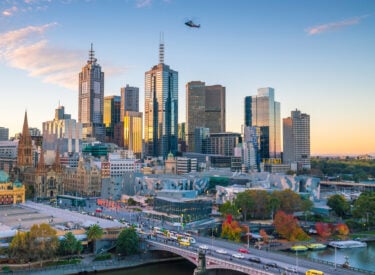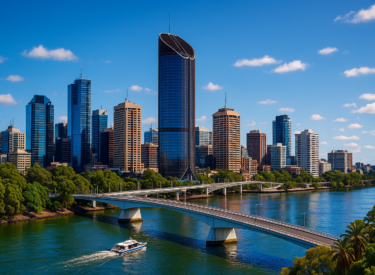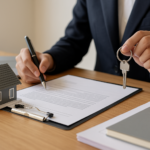Wouldn’t it be great to know which property is likely to double in value first?
Not just any property—your property.
Imagine confidently selecting an investment that outpaces the market, builds equity faster, and brings you one step closer to financial freedom.
While we know that, on average, Australian property values double every 10 years or so, not all properties perform equally.
Some never get there.
Others sprint ahead.
So, how do you pick a future outperformer?
Here are 7 signs that your property could double in value faster, based on decades of data and research by our team at Metropole, strategic property insights, and the factors that matter most in the Australian context.
1. It’s in a capital city
If you’ve been following my articles, you’ll know I’m a firm believer in the long-term performance of capital city properties—especially Sydney, Melbourne, and Brisbane.
These cities have:
- Population growth
- Economic diversity
- Infrastructure investment
- Job creation
These are the key ingredients that fuel long-term capital growth.
While some regional centres may look attractive today (especially post-COVID), many lack the economic depth to sustain long-term value growth.

Tip: Look for properties in suburbs with access to a major CBD, reliable transportation links, and quality lifestyle infrastructure.
2. It’s in a gentrifying suburb
Gentrification is one of the most powerful growth forces in real estate.
When a suburb transitions from “ugly duckling” to “most wanted,” property values can soar.
You know the signs:
- Cafés replacing fish ‘n’ chip shops
- Renovated homes replacing original weatherboards
- Professionals moving in and pushing out renters
This isn't just aesthetic—it’s a sign of increasing disposable income, demand from aspirational buyers, and limited supply.
Suburbs like Brunswick (Melbourne), Newtown (Sydney), and West End (Brisbane) have all benefited from this process.

Tip: If you spot the early signs of gentrification, you could be buying at the start of the growth wave.
3. It’s the right type of property for the area
You can buy the right property in the right location, but if it doesn’t suit the local demographic, it can still underperform.
For example, in blue-chip suburbs dominated by professionals and families, a large, renovated family home on land will almost always outperform a shoebox apartment.
In contrast, in inner-urban, high-density areas with younger renters, a boutique, well-located apartment might be a better fit.
One of the classic mistakes novice investors make is buying the wrong property type for the area, just because it looks cheap or new.

Tip: Know your demographic, know your market, and buy accordingly.
4. It has a strong land-to-asset ratio
In property investment, land is what appreciates; buildings depreciate.
So the more valuable the land component of your purchase, the better your chances of strong long-term growth.
This doesn’t mean you need to buy large blocks - it means buying properties where the land is valuable and in limited supply.
A townhouse or villa unit in a landlocked inner suburb may have a better land-to-asset ratio than a shiny apartment in a high-rise complex.

Tip: The value is in the dirt, so make sure you’re buying as much valuable dirt as you can afford.
5. It has scarcity—it’s not one of a hundred clones
Scarcity drives demand.
And demand drives prices.
Cookie-cutter apartments in massive complexes may look good on paper, but often suffer from oversupply and poor capital growth.
On the other hand, a renovated period home, character-filled townhouse, or property in a tightly held street can be highly sought after.
Buyers and tenants value uniqueness.
If your property stands out in a good way, it’s more likely to attract competition, and competition pushes up the price.

Tip: Look for a property with something unique, special or different about it.
6. It’s purchased below its intrinsic value
Now, I’m not suggesting bargain-hunting in cheap suburbs.
Instead, look for opportunities where a property’s value isn’t fully recognised by the market yet, but it soon will be.
This could be due to:
- A motivated vendor
- Poor presentation masking strong fundamentals
- Temporary market sentiment
- Lack of buyer interest due to uncertainty (like Melbourne over the last few years).
In a time of fear, uncertainty, or rising interest rates, savvy investors can buy well by focusing on long-term fundamentals, not short-term noise.

Tip: When you buy below the intrinsic value, you build in your upside from day one.
7. It’s bought with a strategic plan in mind
The best-performing properties I’ve seen aren’t random purchases—they’re part of a bigger wealth strategy.
This means:
- Buying with a purpose (capital growth, not just yield)
- Structuring your loans correctly
- Buying in the correct ownership structure
- Planning your next move (another purchase, a renovation, or development)
Too many investors buy emotionally or opportunistically.
Those who double their wealth faster do so because they have a clear roadmap and a trusted team behind them.

Tip: Have the team at Metropole build you a customised strategic property plan – click here to schedule a time for a chat with one of our wealth strategists.
Final thoughts
If you own a property that ticks most of these boxes, congratulations, you’re ahead of the curve.
But if you’re unsure whether your portfolio is positioned for maximum growth, or if you’re looking to add another high-performance asset, this is the perfect time to review your strategy.
Despite the noise in the market and housing affordability debates, well-located, investment-grade properties in Australia continue to perform strongly over time.
And right now, with some buyers on the sidelines and market sentiment still patchy, it may be a rare counter-cyclical opportunity to secure your next wealth-building asset.
If you want clarity and confidence moving forward, click here now and book a complimentary Wealth Discovery Chat with one of our Metropole Wealth Strategists.
We’ll help you map out a customised, strategic property plan to safely grow your wealth.














